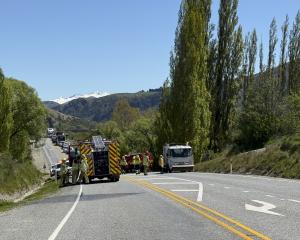Queenstown's position as the engine room driving growth in Otago has been underscored by a new report profiling the province's economic performance.
The report, prepared by Business and Economic Research (BERL) and released yesterday, showed the economies of Dunedin and the Central Otago, Clutha, Queenstown-Lakes and Waitaki districts had punched above their weight in many ways during the year to March 2009.
While many key indicators - such as gross domestic product (GDP) per capita growth or labour productivity growth - dropped into negative territory during a period of economic turmoil, they did so at lower rates than the national average, the report found.
The number of people in employment actually grew during the year, and fractionally faster than the national average, at 0.8% compared to 0.7%, it said.
A similar trend was evident in the decade to 2009, with GDP growth in line with national trends, while growth in employment and the creation of new business outstripped the national rate.
However, the report noted the region's labour productivity was growing at a slower rate than nationally, and warned low population growth across the region remained a "major challenge".
That was particularly true when the Queenstown Lakes district was removed from the figures.
The regional population grew by 1% during 2009, but outside the Queenstown Lakes district the average dropped to just 0.5% across the other four local economies, the report said.
"Excluding [the] Queenstown Lakes district from the equation results in significantly lower overall growth in employment, GDP and business numbers, which subsequently fall below the national average."
By March last year, the region employed 91,100 full-time equivalent (FTE) workers, producing $8.14 billion in GDP through 26,400 businesses, the report said.
Retail and distribution employed more than one in four workers, many in tourism, contributed 20% of GDP and accounted for one-fifth of businesses, while business services comprised 15% of employment but about 33% of GDP and business units.
The BERL report was commissioned by Otago Forward, the organisation dedicated to advancing the economic development of the Otago region, whose representatives included the region's five mayors and the Otago Chamber of Commerce.
Queenstown Lakes Mayor and Otago Forward chairman Clive Geddes said the report was the first to feature collaboration between all five councils, and contained information that would be "very useful" to councils, businesses and investors.
"It highlights the fact that each district has distinctly different drivers in their economy. For example, if you live in the Clutha district you are five times more likely to work in the forestry and logging industry than the national average."
DCC economic development unit manager Peter Harris said while the data was not "up to date", the report was still useful.
"If you look at the big picture, it is still useful to have a long-term overview of different industries and districts," he said.
The report might also challenge some "preconceptions" about where the jobs and wealth come from across the region, he said.
Detailed assessments of each area showed, for example, the most productive workforce was found in the Waitaki district, while Dunedin pipped the other four when it came to the number of people employed in the film industry.
Dunedin Mayor Peter Chin, who was in Auckland, said he would comment once he had seen the final report.











